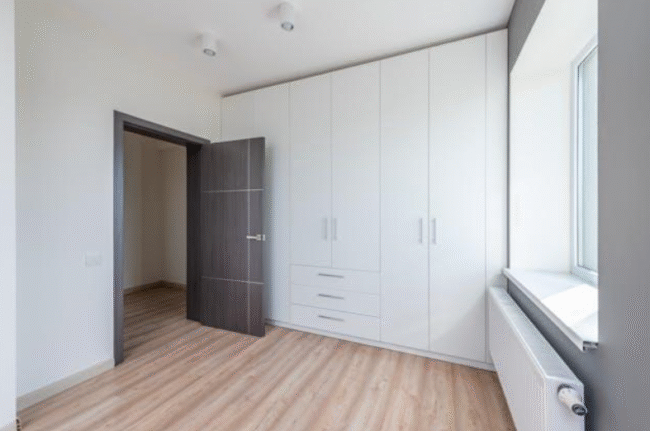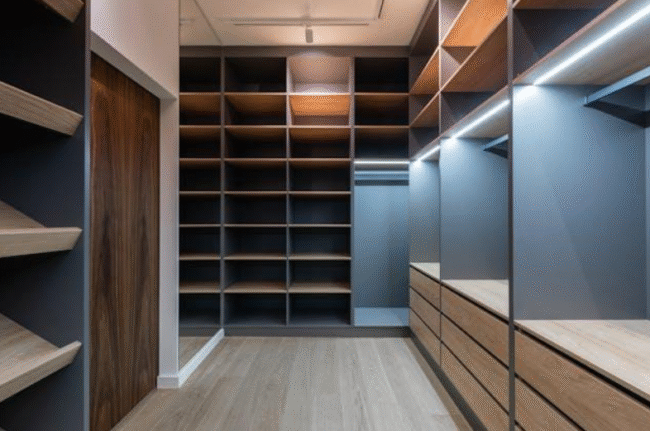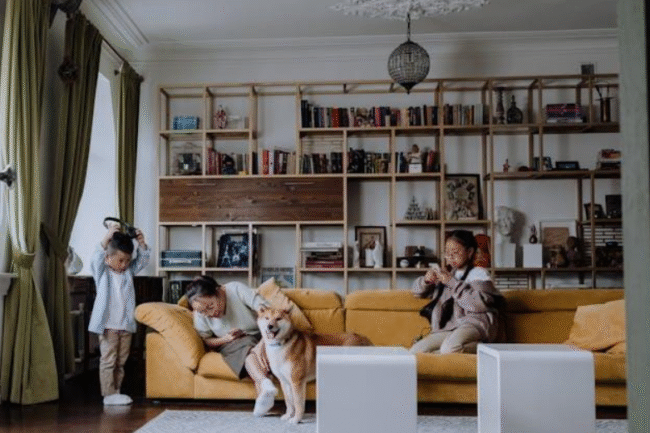
Moving into a new house feels exciting—until the boxes start stacking up and the stress creeps in. Most people don’t realize how quickly clutter takes over without a strategy. That’s why it’s smart to plan your new home’s storage before anything gets unpacked. Instead of reacting to the chaos, you can get ahead of it. Empty rooms offer the best chance to map out what goes where.
Think Through Each Room Before You Fill It
Walk through your home while it’s still empty. Pause in each room and imagine where things will live. Picture how you’ll use the space daily. That mental exercise helps prevent you from stashing stuff in random places.
This is also the best time to plan interior upgrades. Installing shelving, built-ins, or new closets is much easier when the rooms are still bare. You won’t have to move furniture later or unpack twice just to make space for improvements.
Prioritize High-Traffic Zones Early
Start with areas you use the most: the kitchen, bathrooms, and entryways. These spaces collect clutter quickly. Having functional storage there will keep you sane.
Plan cabinet space, drawer organizers, and wall hooks before those rooms get filled with boxes. Small steps now prevent junk drawers and messy counters later. Storage is not about hiding clutter. It’s about building a system that works for your life.
Use Vertical Space to Free Up the Floor
Don’t rely only on the floor and furniture. Go up. Tall shelves, wall hooks, pegboards, and over-the-door organizers all help.
Hallways, utility rooms, garages, and closets often have unused vertical space. Install shelves or stackable bins now, while you still have clear access. This keeps your floors clean and your storage organized.

Expand Beyond Closets
Closets are helpful, but they’re not your only option. Ottomans with built-in storage, beds with drawers underneath, and coffee tables with hidden compartments all pull double duty.
Outside the home, innovative stormwater storage solutions let you manage drainage and safely store outdoor equipment. It’s an efficient way to blend function and home care without taking up extra space in the garage or yard.
Label Everything During the Packing Process
Before you even move in, set yourself up for a smooth unpacking. That starts with one simple habit: proper labeling.
Write the room name and list key contents on every box. Use color-coded stickers if it helps. Labeling saves you from digging through everything just to find socks or your kid’s backpack. It also tells the movers exactly where to place each box.
Set Up Storage Zones Before You Unpack
Once you’re inside the new home, don’t open boxes until you’ve set up the main storage areas. This includes cabinets, drawers, shelves, and bins. You need a place for everything to land.
It’s tempting to start with decorations or furniture, but that can wait. Prioritize utility. When you plan your new home’s storage first, the rest unfolds more smoothly.
Give Your Home Office the Structure It Needs
If you work from home, you know how quickly clutter builds up. Without structure, desks turn into dumping grounds for paperwork, tech, and snacks.
Set up filing systems, desktop organizers, and rolling carts. Mount a shelf above your desk or get a drawer insert for supplies. Keeping your workplace clean and organized helps you stay focused and productive. Even one drawer dedicated to cords and chargers can reduce stress.
Don’t Ignore the Garage or Utility Rooms
Garages often become a holding zone for everything you don’t want inside. But without a system, that space becomes a mess fast.
Plan garage storage the same way you’d approach any room. Use ceiling-mounted racks, wall panels with hooks, or adjustable shelves. Divide the space into categories—tools, lawn equipment, seasonal décor—so nothing gets lost in the shuffle. Utility rooms deserve storage too. Brooms, mops, and laundry supplies can all have a home if you install the right shelves or baskets.

Help Kids and Pets Stay Organized Too
Your kids won’t keep things tidy unless it’s easy for them to do so. Set up storage at their level. Low shelves, labeled bins, and open baskets give them a chance to pitch in.
Use one area for toys, another for school supplies, and a hook by the door for jackets or backpacks. The same goes for pets. Dedicate a drawer or basket for food, grooming items, and toys. This keeps your kitchen or hallway from turning into a chaotic zone.
Budget for Small Fixes and Extras
Even newer homes come with small surprises. You might need shelf liners, curtain rods, drawer organizers, or cabinet pulls.
Before you get into a bind, set aside $300 to $500 for these costs. This small buffer helps you fix things without using credit cards or dipping into savings. If you’ve already made a plan to plan your new home’s storage, then these extra purchases won’t feel frustrating. You’ll see them as finishing touches.
Consider Temporary Storage for Overflow
Sometimes you just need extra space to think. If you’re still unsure where certain things belong, a small storage unit or portable container can help.
Use it for items you won’t need immediately: seasonal decorations, camping gear, off-season clothes. This gives you more space to organize what matters now. You’ll have time to make smarter decisions about what to keep or donate.
Short-term storage also buys you time to test out your setup. You may realize later that a bookshelf works better in the bedroom than in the hallway—and that’s okay.
Think About Long-Term Maintenance
The goal isn’t to be perfect. It’s to create a system you can maintain. That means setting realistic expectations. Life gets messy. Homes do too. But good storage makes cleanup quicker and less overwhelming.
Keep a few bins empty for the inevitable overflow. Revisit your system every few months to adjust it. If something isn’t working, change it. Storage isn’t one and done. It’s an ongoing part of making your house feel like home.
Why It Pays to Be Prepared
There’s nothing worse than living out of boxes for weeks because your home isn’t ready. That’s why you should plan your new home’s storage before anything gets delivered. A little thought now will save you frustration later.
Planning means less clutter, faster setup, and more comfort. It lets you enjoy your space from the start, instead of playing catch-up. Don’t wait until the chaos hits—set up storage first, and you’ll thank yourself every day after.
Meta: Plan your new home’s storage early to avoid chaos. Organize smartly before move-in day for a stress-free, clutter-free start.
Kw: Plan Your New Home’s Storage
